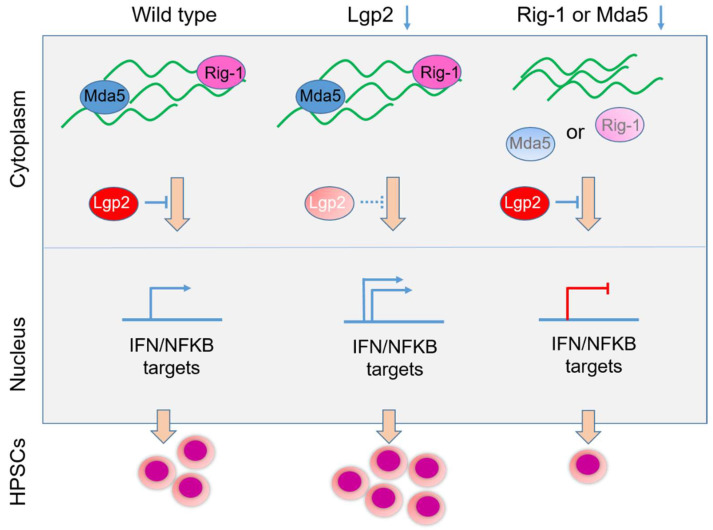Figure 3.
Proposed mechanism for repeat element RNA-dependent activation of the innate immune receptors Rig-1 and Mda5 and negative control by Lgp2 in hematopoietic stem and progenitor cells. Inflammatory signaling is a key regulator of developmental hematopoiesis, but the mechanisms driving such signals have remained unknown. Recent studies in mouse and zebrafish systems have provided insight into the underlying mechanisms by revealing endogenous repetitive element RNAs as activators of the pathogen pattern recognition receptors (PRR) of the RIG-I-like receptor family during embryonic hematopoiesis. RIG-I-like receptor activation induces inflammatory signals necessary for hematopoietic stem and progenitor cell generation (left panel). Lgp2 deficiency (LGP2 encoded by the DHX58 gene in humans) enhances inflammatory signaling via IFN/NFκB and HSPC formation (center panel). Rig-I or Mda5 deficiency impairs inflammatory signaling and HSPC formation (right panel). Overexpression of repeat element RNA (specifically a SINE RNA that is schematically represented in green) enhances HSPC formation by engaging Rig-I and Mda5 (adapted from [9] and described in detail below).

